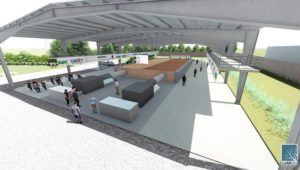NEWS
Trenchless Technology Center unveils plans for new facility
Louisiana Tech University and the College of Engineering and Science recently announced plans to construct a new facility for the Trenchless Technology Center (TTC). The facility will be an additional space for faculty, students, and the trenchless industry as a whole to receive world-class field training and perform research for the trenchless technology industry.
 The facility will be constructed on Louisiana Tech’s South Campus, adjacent to the TTC’s National Trenchless Technology Research Facility, and will provide space for TTC specialty schools such as the Auger Boring School (ABS) and Utility Investigation School (UIS). TTC is a well-respected resource for the international trenchless community, and TTC’s on-campus training schools and conferences draw attendees from throughout the world. This additional space will be available for international equipment and material manufacturers and technology providers for research and development and technology validation.
The facility will be constructed on Louisiana Tech’s South Campus, adjacent to the TTC’s National Trenchless Technology Research Facility, and will provide space for TTC specialty schools such as the Auger Boring School (ABS) and Utility Investigation School (UIS). TTC is a well-respected resource for the international trenchless community, and TTC’s on-campus training schools and conferences draw attendees from throughout the world. This additional space will be available for international equipment and material manufacturers and technology providers for research and development and technology validation.
Former TTC Director Dr. Tom Iseley led a campaign that raised funding entirely from the industry supporters of the TTC. All sponsors will be recognized on a monument of this world-class research and training facility. Construction began in November and should be completed in early 2021.
“This new facility will provide the Trenchless Technology Center with space to continue providing cutting-edge training to professionals in trenchless technology fields,” Dr. Hisham Hegab, Dean of the College of Engineering and Science, said, “and I am grateful to our industrial partners for making this new facility possible and to Dr. Iseley for spearheading this fundraising effort.”
The Trenchless Technology Center was created in 1989 to promote research, development, and technology transfer in the trenchless industry. Since its inception, the center has hosted numerous conferences and held educational seminars around the world and has helped municipalities around the U.S. solve problems with underground infrastructure.